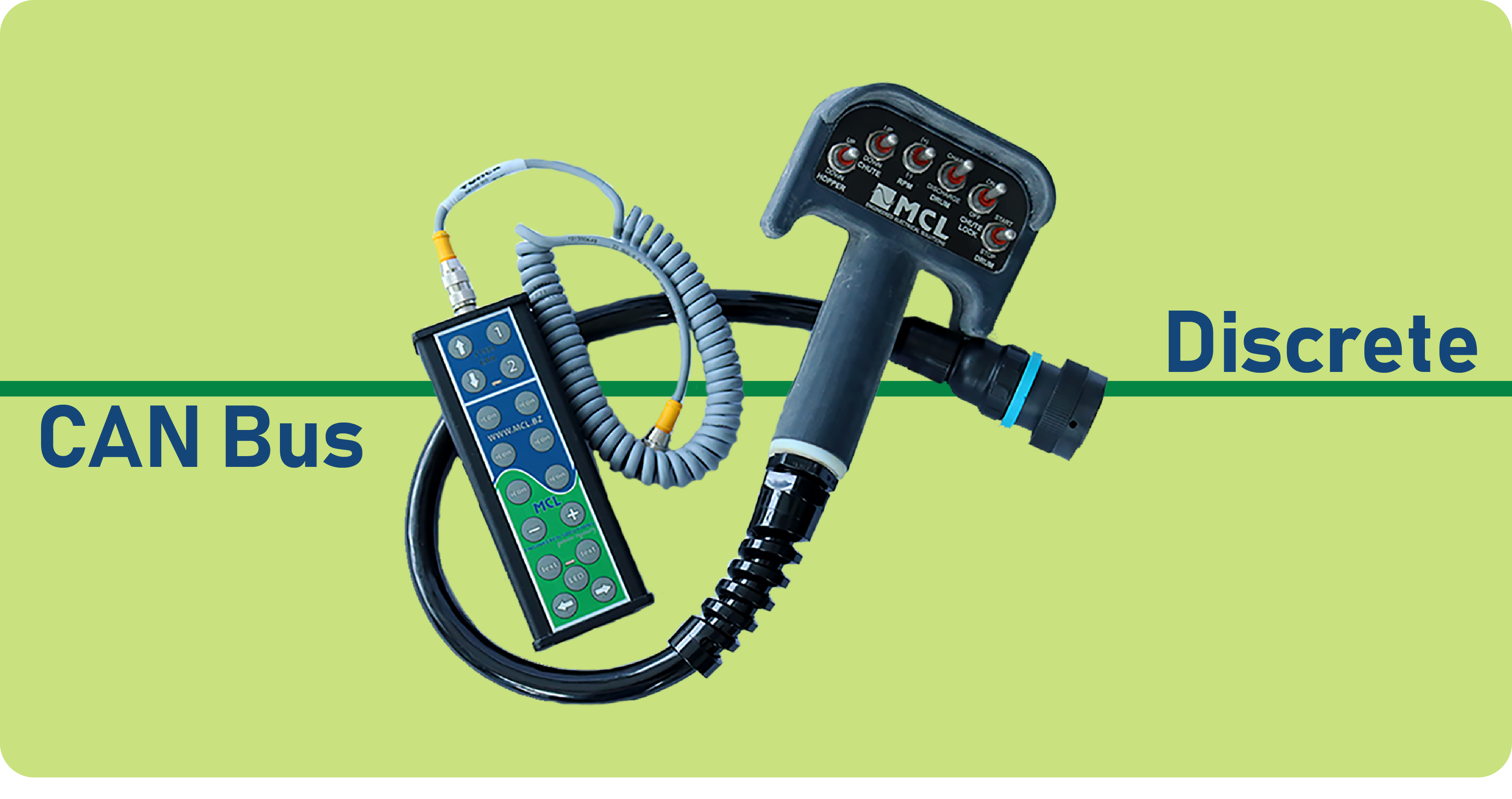Pendant controls are found on countless pieces of machinery today, and you can even find multiple pendant controls on some equipment. Typically, the pendants are wired one of two ways, making it either a Controller Area Network (CAN bus) system or a discrete system. Since pendants control important functions on heavy-duty machines – like the drum and hopper on a concrete mixer – it’s imperative to choose the best system for the job, as each provides different benefits.
To help you decide whether CAN bus or discrete is the way to go for your equipment, here’s a breakdown of what each system offers:
CAN Bus System
A CAN bus system (also referred to as “smart”) starts with a circuit board and will connect to a network of other electronic components if necessary. Because the circuit board acts as “the brain,” a CAN bus system doesn’t require many wires to relay signals. At most, there will be 5 wires coming out of the pendant – CAN High, CAN Low, and the power, ground and shield – so it’s better suited for low current environments. This also means the pendant packaging can be streamlined so that it’s lightweight, ergonomic and easy to operate. The flexibility of the software allows designers to expand the CAN bus system to additional locations on the equipment as needed or control the same function from multiple pendants. If you want a wireless pendant, a CAN bus system has those capabilities and is easy to work with.
Since the CAN bus pendant can be connected to other CAN-enabled components, the system can perform complex tasks within a machine. For example, if the pendant controls an auger, the pendant will know whether or not the machine’s engine is running at a high enough RPM to start the auger. If the operator tries to turn the auger on before the minimum engine RPM is reached, the system will tell the engine to increase its RPMs, and the auger will start once the RPMs are high enough.
The initial set up of a CAN bus system can be costly, because it requires circuit board designs and software development. It can also be more expensive and more difficult to service due to the nature of the software. However, if you need a high volume of pendants that are capable of performing complex tasks and can adapt to changing needs, a CAN bus system is likely the better option. CAN bus and other smart pendant control systems are becoming the norm.
Discrete System
In a discrete pendant, each button or switch needs wires. So the more controls you need on the pendant, the bulkier it will be. However, in some cases, bulkier is better. For example, a concrete worker typically wears gloves to protect his or her hands from the chemicals in concrete. Therefore, larger buttons that are easy to operate and clean (if necessary) are optimal. A discrete system can also handle higher currents and can supply power directly to the load rather than through a circuit board. The parts are also fairly simple to service and replace compared to the components in a CAN bus system.
In the auger example above, a discrete pendant might try to start the auger, but if the RPMs were too low the system would be overloaded and may shutdown, overheat, or worse. The operator would have to know to manually throttle up to increase the RPMs and then start the auger.
Overall, a discrete system is less expensive to develop and service, however, it won’t function in highly complex systems. Therefore, discrete pendants are better suited for applications where you don’t need very many controls, or where they’ll be completing simple tasks.
While designing or purchasing a pendant control, always consider the environment it will be used in and how it will need to function. Hopefully, the tips above help make your decision easier, but if you want to learn more about the design of an electrical assembly, download our free eBook, 8 Questions to Ask Before Designing an Electrical Assembly. Click the button below for your free copy.





